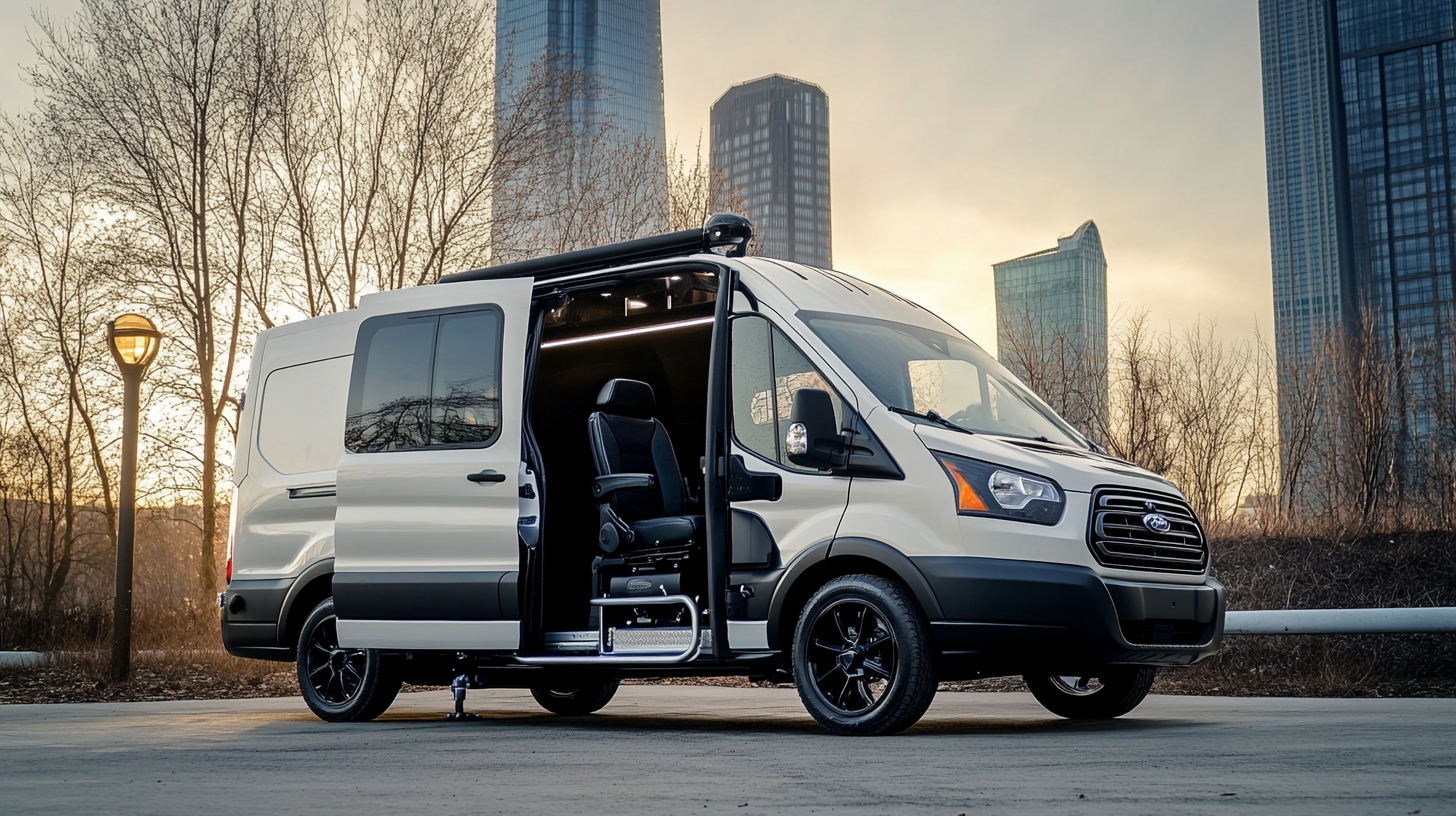Rising Above Tariffs How Chinese Made Best Handicap Vans Thrive in a Competitive Market
In recent years, the U.S.-China trade tensions have resulted in a complex landscape for manufacturers and consumers alike, particularly in the mobility sector. Despite imposing tariffs that threaten to disrupt the supply chain, Chinese manufacturers of handicap vans have demonstrated exceptional resilience and adaptability. According to a report by the National Mobility Equipment Dealers Association (NMEDA), the demand for accessible transportation solutions has surged, with the market expected to reach $2.56 billion by 2027, driven by an increasing elderly population and a growing emphasis on inclusivity. This push for greater access is encouraging innovative designs and competitive pricing in the handicap van segment, showcasing how businesses can thrive even amidst economic hurdles. As we delve deeper into the strategies employed by Chinese manufacturers, we will uncover the elements that allow them not only to survive the tariffs but to emerge as leaders in this vital industry.

The Impact of U.S.-China Tariffs on the Van Manufacturing Landscape
The U.S.-China trade tariffs have significantly altered the landscape of van manufacturing, particularly for companies that specialize in producing handicap vans. According to a report by the International Trade Administration, tariffs on imported components can increase costs by as much as 25%, compelling manufacturers to rethink their supply chains. This scenario has led many businesses to seek local alternatives, which may, in turn, stimulate domestic production but could also drive up prices for end consumers.
In response to these tariff challenges, some Chinese manufacturers have devised innovative strategies to maintain their competitive edge. A recent analysis from the National Automotive Manufacturers Association suggests that firms focusing on electric and hybrid handicap vans are outperforming traditional models by 30% in market growth. By investing in advanced technologies and local partnerships, these manufacturers create vehicles that not only comply with new regulations but also appeal to a broader range of customers. As a result, they are rising above tariffs while catering to an increasing demand for accessible transportation solutions in an evolving market.

Adaptation Strategies: How Chinese Manufacturers Respond to Tariff Challenges
In recent years, tariffs have created a challenging environment for Chinese manufacturers, particularly in the handicap van market. To rise above these obstacles, many companies have implemented innovative adaptation strategies that allow them to maintain their competitive edge. One crucial approach has been the diversification of their supply chains. By sourcing materials from various countries, Chinese manufacturers can mitigate the risks associated with tariffs and reduce costs, enabling them to pass savings on to consumers while maintaining product quality.
Furthermore, Chinese manufacturers have invested heavily in research and development to enhance the design and functionality of their vans. By focusing on user customization and modern technology integration, such as advanced safety features and accessibility options, they not only improve their products but also cater to a broader market. This responsiveness to consumer needs helps distinguish their offerings in a crowded marketplace. Additionally, fostering strong relationships with local businesses in target markets allows these manufacturers to navigate regulatory challenges more effectively and strengthen customer loyalty.
Rising Above Tariffs: Adaptation Strategies of Chinese Manufacturers in the Handicap Vans Market
Quality and Innovation: Key Factors for Success in a Competitive Market
In today’s competitive market, the success of Chinese-made handicap vans hinges on quality and innovation. Manufacturers are increasingly investing in advanced technology and materials to enhance vehicle durability and safety. The focus on quality means that these vans not only meet but often exceed international standards, making them more appealing to consumers looking for reliability.
Tip: When researching handicap vans, prioritize those that offer safety features such as anti-lock brakes, adaptive cruise control, and reinforced structures designed to protect passengers with disabilities. These elements not only ensure a safer ride but also contribute to the overall value of the vehicle.
Innovation plays a crucial role in differentiating these vans from their competitors. Features like customizable seating arrangements, accessible control systems, and improved accessibility aids showcase how manufacturers are placing emphasis on user experience. As the market evolves, embracing cutting-edge designs and sustainable practices will be essential for maintaining a competitive edge.
Tip: Look for models that incorporate smart technology, such as navigation and communication systems tailored for those with mobility challenges. This not only adds convenience but also enhances the independence of users, making the vans more attractive options in the marketplace.
Market Share of Chinese Made Handicap Vans in 2023
Market Trends: The Growing Demand for Handicap Vans in the U.S.
The demand for handicap vans in the U.S. is witnessing a remarkable surge, driven by a growing awareness of accessibility and inclusivity. According to a recent report by Research and Markets, the U.S. mobility vehicle market is projected to grow at a CAGR of 8.7% from 2021 to 2026, reaching approximately $3 billion. This growth reflects the increasing number of individuals with disabilities and the rising aging population who require modified transportation solutions to maintain their independence and mobility.
In addition, the COVID-19 pandemic has highlighted the importance of accessible transportation, leading to more people seeking out handicap vans. The National Highway Traffic Safety Administration (NHTSA) indicates that around 1 in 4 adults in the U.S. experience some form of disability, making it imperative for manufacturers to meet the escalating demand with innovative and reliable vehicles. As this market continues to expand, manufacturers are responding by offering advanced features such as smart technology and enhanced safety systems, further ensuring that drivers and passengers feel secure and connected on the road.

Building Resilience: Lessons from Chinese Companies Thriving Amid Tariffs
In an increasingly competitive market shaped by tariffs and global economic shifts, Chinese companies producing handicap vans have showcased remarkable resilience. These businesses have adapted to the challenges posed by international trade barriers, embracing innovative strategies that prioritize flexibility and consumer needs. By leveraging local resources, they have managed to maintain cost-effectiveness while ensuring their products meet high-quality standards.
One key lesson from these thriving companies is the importance of agility in operations. By investing in research and development, they continuously refine their designs and incorporate cutting-edge technology, making their vans more user-friendly and accessible. Additionally, forming strategic partnerships both domestically and abroad has allowed them to expand their market reach and build robust supply chains. This collaborative approach not only mitigates the impact of tariffs but also fosters a sense of community and shared mission among stakeholders, ultimately driving long-term success.